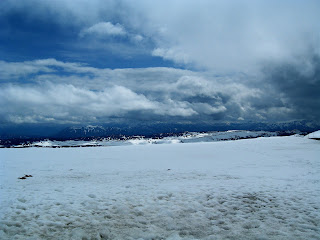Sharing our grief is hard, no matter the cause. It could be the death of a parent, spouse, pet, or child. The death of a long-term, committed relationship can be just as devastating.
It’s made more difficult when we are sharing with someone who has never experienced a severe loss. We are trying to describe what’s going on inside, and there is nothing physical that we can hold up to show them. And if neither of us has grieved before, then we don’t know the landscape we are trying to describe. It’s like being dropped in a foreign land and trying to describe it to someone over the phone.
The impact of poetry comes from its use of images, the sounds of the words, and how the words appear on the page to express the physical (line breaks, stanzas, use of white space). Spoken poetry is akin to soliloquy in drama. Writing poetry also leaves you exposed in ways that prose does not.
Kelsea Habecker uses poetry to talk about her grief in trying to keep a marriage going while living through a long winter in a small village in the Arctic. In her book, Hollow Out, she pairs her inner turmoil with images of the rough Alaskan landscape — whales throwing themselves onto rocky beaches to scrape irritating barnacles off, patches of tattered hair clinging to a caribou skeleton after wolves have moved on, and women collecting salmon berries that they will carefully dole out over the long winter to bring a taste of brightness.
In a world where physical survival is always tenuous, Kelsea endures the frozen land and months of darkness as she struggles to survive the emotional turmoil of her relationship. Images from the natural world illustrate her personal upheavals. This is from the poem “Bird That’s Come Home:”
You wrap yourself in a shell,
I fly to the shore to contemplate the churning
sea and the birds in it. Gulls float the rough swells.
And even in the death-crack
of Artic winter the sturdiest birds remain.
But what about us?
She learns to trust her intuition to guide her in what she does. She listens to what she needs, and to what the relationship requires to keep going. We feel her move back and forth in the relationship like the pack ice breaking apart for a time before settling back together with each change in the sea. From “Breaking Point:”
Breath becomes what we wade through
to get where we’re going
which is always inside
and never far enough from ourselves.
When hope is fading, and with options limited, Kelsea details her difficulty in finding reasons to hang on. She talks about how the constricted life of the village in winter causes people to react in abusive behaviors. She also talks of being surrounded by the wonders and power of nature, and how fragile life is, and she has only to look out the window to be reminded of this. By facing the darkness (literal and figurative), she comes to understand the resilience of her spirit and the importance of hope.
Kelsea pays attention to the sounds of her words and crafts her language. From “Cut, Then Chase:”
they splinter and hitch away
the clutches of ice, carve
a road out of drifts and fragments.
Her personal journey of discernment and darkness is illuminated by dramatic images from nature, and the results are stunning. It’s a reminder to face our grief honestly and do something creative with the emotions we feel and the images we see.


Mark, thank you for this attentive and generous reading of my poetry. Writing poems helped me through my grief, and it's remarkable to think that they also might speak to others, to help others through grief as well.
ReplyDelete